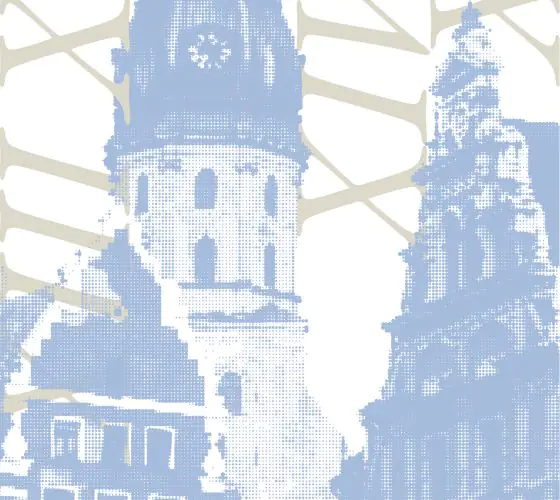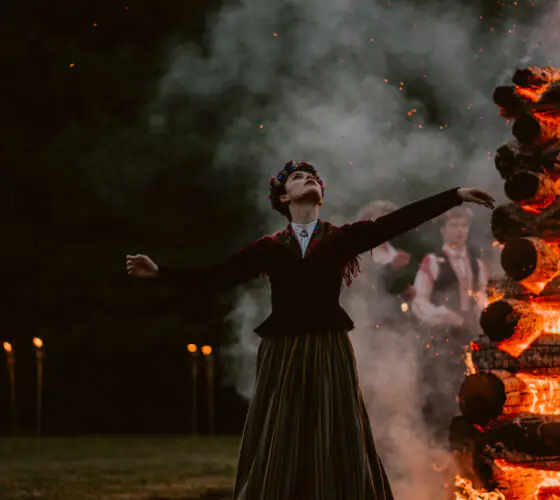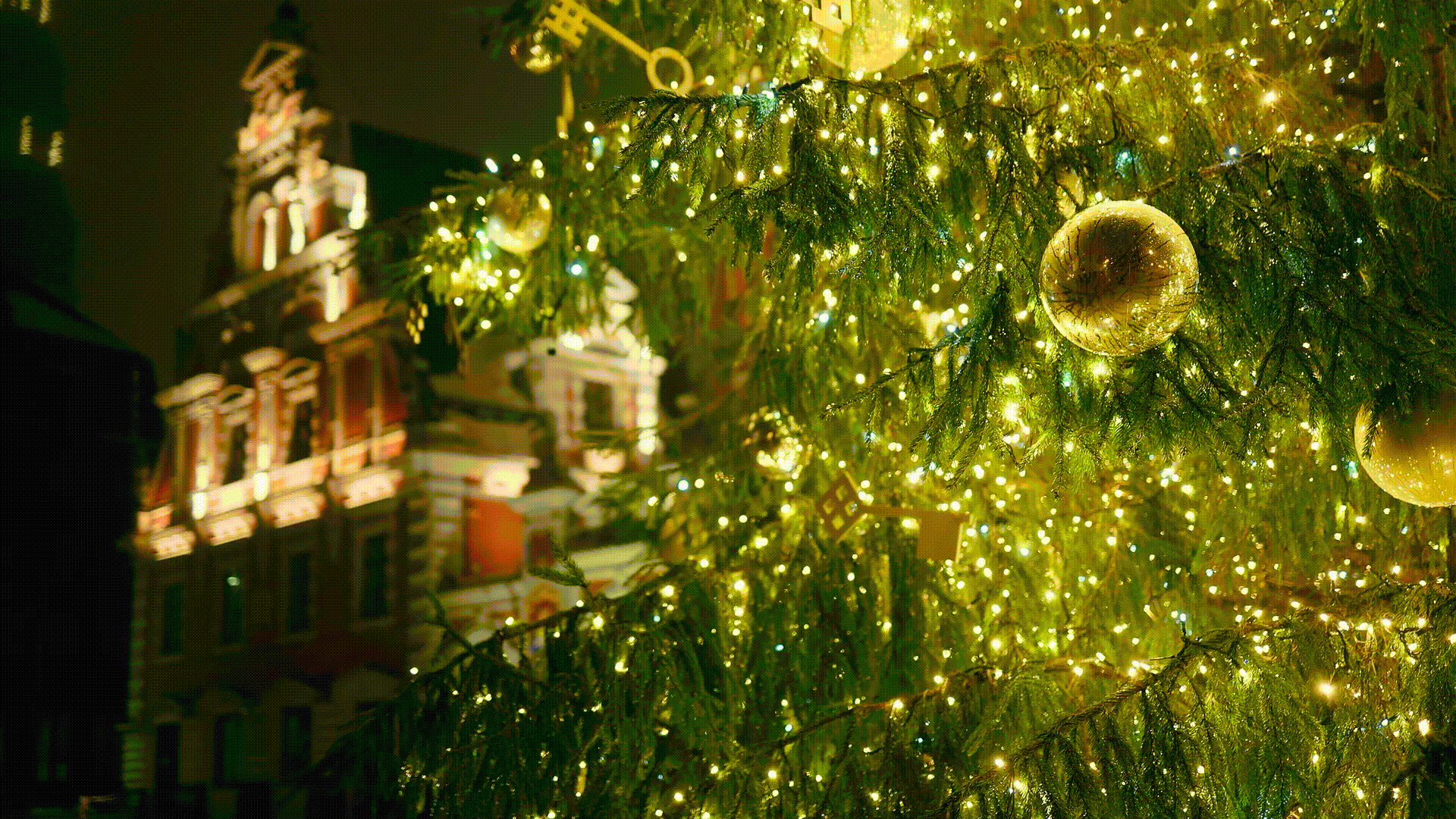
stock.adobe.com
This version immediately found opponents. The most resolute and harshest refuters came from Tallinn: according to the Estonians, the Christmas tree in the capital of their country appeared almost a century earlier. Today, representatives of the Baltic cities continue to dispute each other’s claims (mostly, of course, in a friendly manner). We tried to find out what supports the arguments of both parties and how one of the World’s major Christmas traditions developed.
The Paradise Tree
No one knows when and where the first decorated tree actually appeared and whether it was a fir tree. According to one version, European pagans used plants as ritual decorations not in winter, but in early May. In order for the gods to be favourable and allow a good harvest, a tree or a tall pole decorated with ribbons and flowers was set up in settlements immediately after Walpurgis Night. This tradition later carried over into the summer solstice – for example, in Scandinavia, the raising of the pole is still a prominent tradition.
During the Middle Ages, pagan and Christian beliefs became increasingly intertwined, and although there is no mention of any festive plants in the Bible, flora began to be used in rituals. Before Christmas, houses were decorated with mistletoe, pine and other evergreens. Presumably, this is related to the Gospel of John: that Jesus was greeted at the gates of Jerusalem with palm tree branches.
Plants became part of religion, and then special trees began to be erected in the main squares of mediaeval cities. Some researchers also claim that the first Christmas trees contained an edifying message – reminiscent of the fall in the Old Testament. The fir tree embodied the paradise tree, and the apples, which decorated the branches, were the forbidden fruit.
In parallel, there was also a pagan system of rituals: in many countries, the key element of the Winter Solstice celebration was a tree or log to be burned in a ritual fire. Here, amidst the flames, mediaeval Christianity and the young cities of Europe, the Christmas tree as we know it now was born.
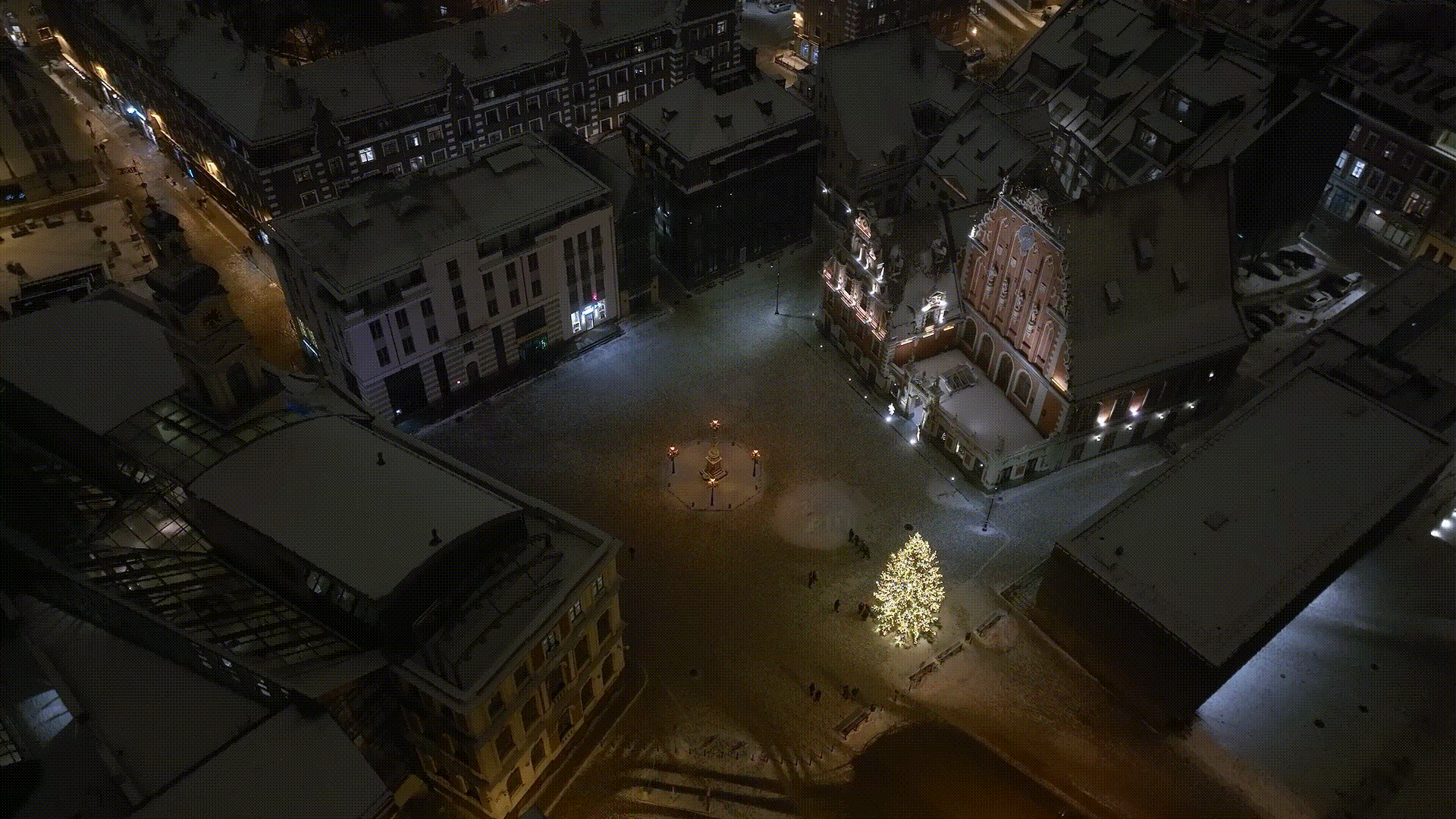
stock.adobe.com
Riga and Revel: who was first
In 1510, Riga really did have a public Christmas tree. We know this for certain since references to the tree are preserved in the archives of the Brotherhood of Blackheads (Bruderschaft der Schwarzhäupter). This mediaeval organisation united single merchants and seafarers who had previously been members of the Grand Guild of the Free City of Revel – now known as Tallinn.
The Brotherhood existed from the middle of the fourteenth century until 1940. Its members had a tangible influence on life both in Revel and Riga, where they owned a house in the Town Hall Square. It is next to this building, restored in 2000, where the commemorative plaque stands in honour of the first Christmas tree.
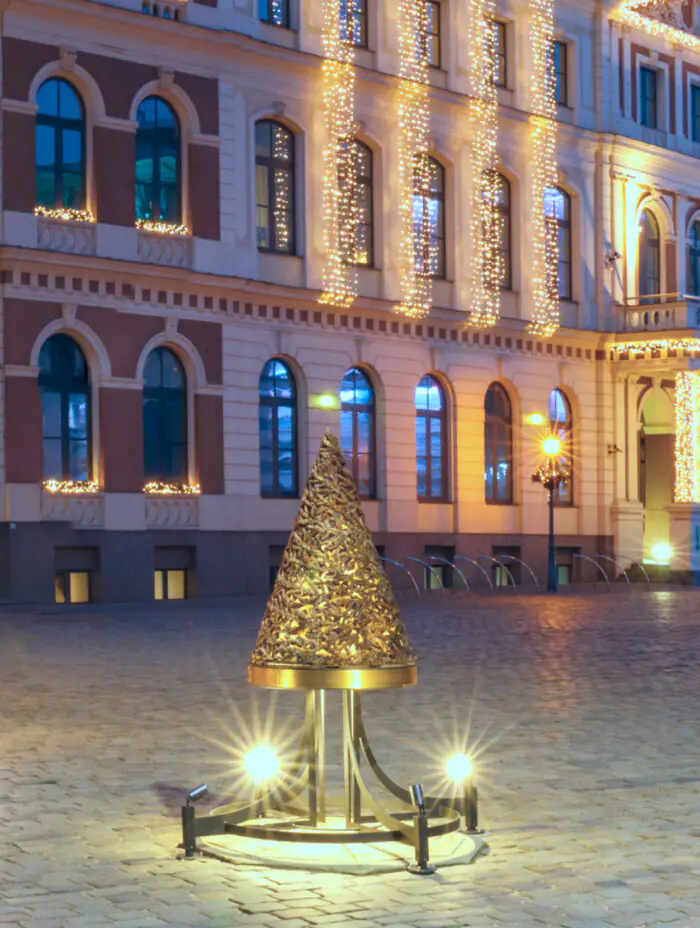
One of the traditions of the Blackheads was to burn the tree before Christmas: a few days before the winter solstice, they would go to the forest, where they would choose the largest and most luxurious fir tree, place it in the main hall, and then set it alight to leave all the failures and offences of the passing year behind. Before the burning, the tree was decorated and dances were organised around it.
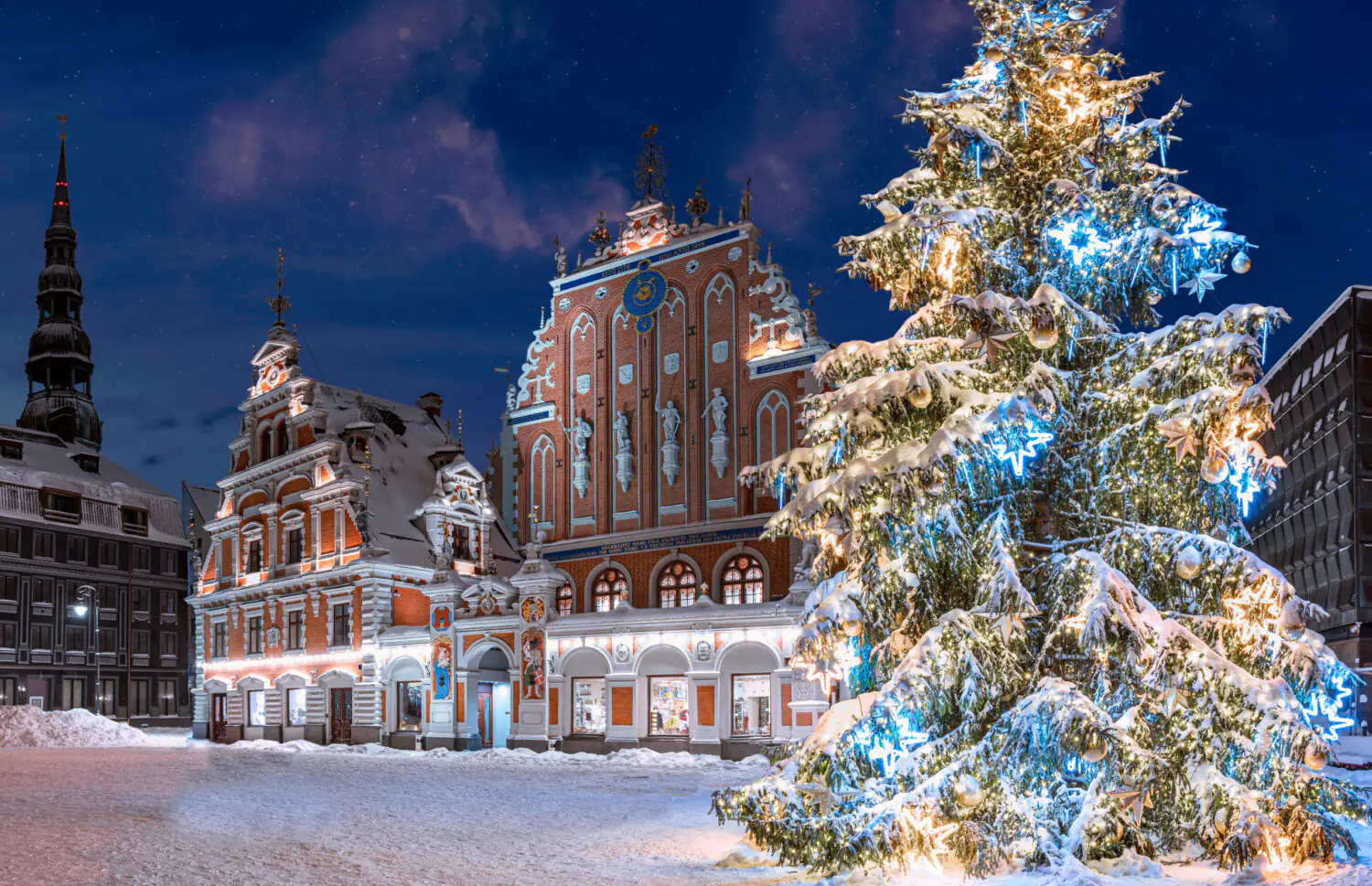
stock.adobe.com
In the Chronicle of the Province of Livonia (Chronica der Provinz Lyfflandt) of 1584, the chronicler Balthasar Russow described in detail the unbridled merriment that engulfed Riga during these cold days before Christmas:
The Burghers also in the winter days, around Christmas and Shrovetide, luxuriated much in their guilds, and the artisans in their own companies. And when the apprentices ran out of drink, they would take a large fir-tree covered with roses, put it up in the market-place, and late in the evening go to it with crowds of women and girls, first singing and twining the tree, and then lighting it, so that it burned brightly in the dark. Then the apprentices would seize each other by the hands and in pairs gallop and dance round the fire, and the firebrands would launch rockets for bragging rights. Though this was strictly rebuked by the pastors, they took little notice. Nor was there any end or measure to carousel rides with women and girls, both day and night, often to the malice and sorrow of the pastors who denounced such things.
In time Christmas trees ceased to be burned. Around the 17th century they became a very common decoration in the houses of the citizens of Riga. But at first they were placed directly on the table next to Christmas treats.
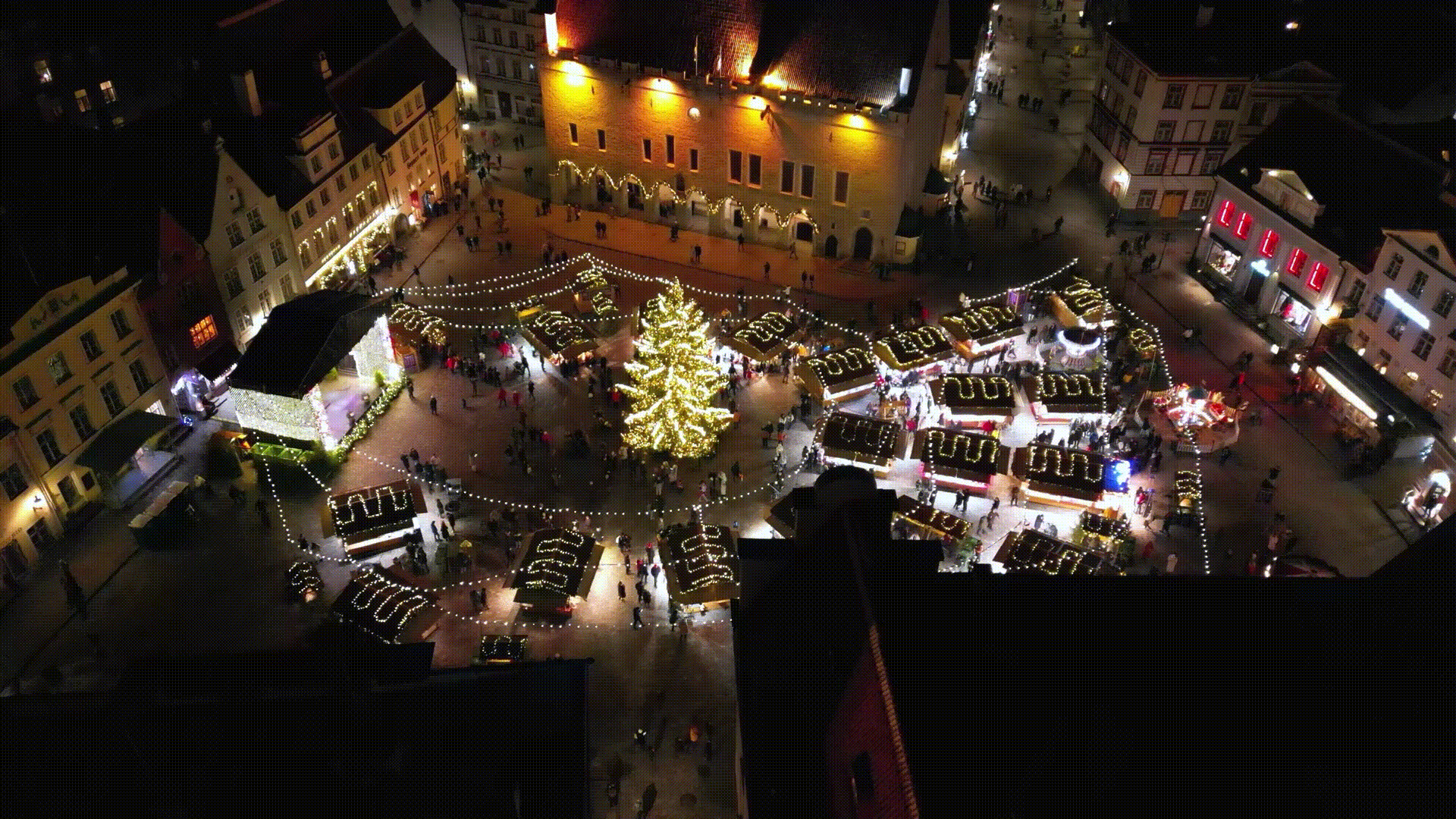
stock.adobe.com
In Revel, a fir tree was also erected in the main town square – and it was done so as far back as the 1400s. At least, that’s what Estonian historian and advisor to Tallinn’s mayor Jüri Kuuskemaa claims, citing documents from the Tallinn Archives. He says that documents from 1441 and 1442 mention that the Tallinn City Council paid musicians to play in the Town Hall Square next to the Christmas tree on 25 December. Just as in Riga, its installation was initiated by the Brotherhood of Blackheads. The tree was burnt, and before that they organised feasts, dances and carnival processions.
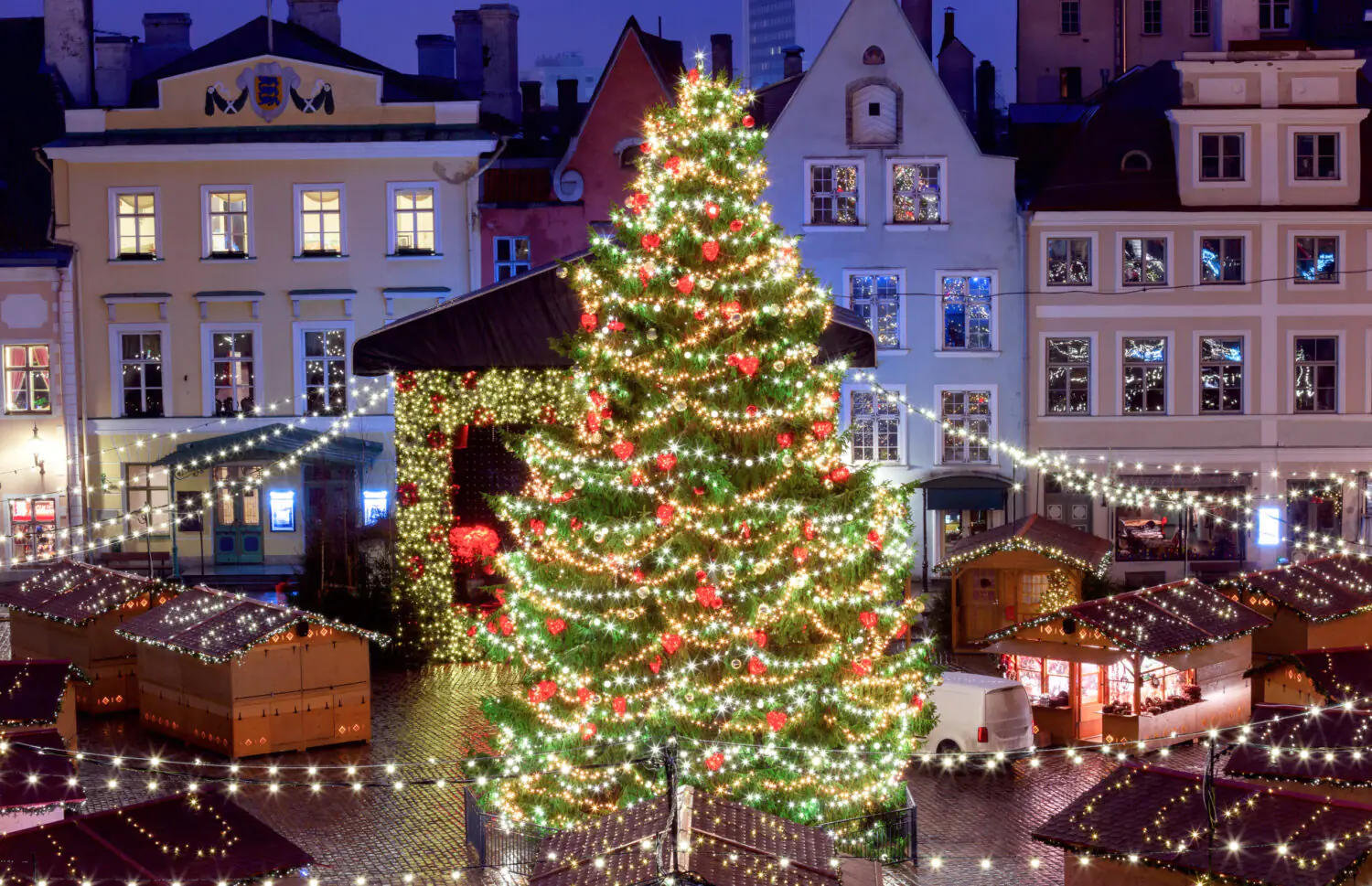
stock.adobe.com
Currently, the most popular and widely recognised version of the Christmas tree’s origin remains with Riga – for example, in the USA, the National Christmas Tree Association took part in celebrating the 500th anniversary of the Latvian tradition.
However, it is entirely possible that the truth resides elsewhere – but there are no known documents that indicate this as of yet. One thing is clear: the capitals of Latvia and Estonia played an important role in the formation of the Christmas tradition, which came to many European countries significantly later.
Echoes of the Middle Ages
In Livonia (an area which at times included present-day Latvia, Estonia and Lithuania), the tradition of decorating Christmas trees was brought by German traders who travelled through the ports of the Hanseatic League – it was they who spread the tradition first to the German-speaking countries and then to the rest of Europe. Until the 19th century, fir trees were decorated mainly in Lutheran countries, and Catholic priests even preached against the use of the tree at Christmas. In Paris, the first fir tree appeared in the 18th century, when it was installed in Versailles, and London, despite their Anglicanism, had to wait even longer – until the 19th century.
There are still many reminders of the former pagan and mediaeval use of the Christmas tree throughout Europe. In France, a “log” – a cake resembling a ritual tree – is served at Christmas dinner. In Estonia, after the winter holiday, Christmas trees are not thrown away, but instead a range of sculptures are made from them and then burnt in a fire show. In Latvia, the same tradition is common among neo-pagans.
Riga also houses an ancient Christmas tree decoration – perhaps the oldest of those that have survived into the 21st century. It sits in the Museum of the History of Riga and Navigation, next to the keys to the city. It was found during excavations in the Old Town. A small stone ball with a hook to hang it with, dating back to the 17th century. One could argue about its origin…but it was found with a pile of pine needles next to it.
And there is another ancient custom that Latvians still adhere to: on Christmas Day, every Latvian resident has the right to cut down a fir tree in any of the state forests, which occupy roughly a third of the country.




